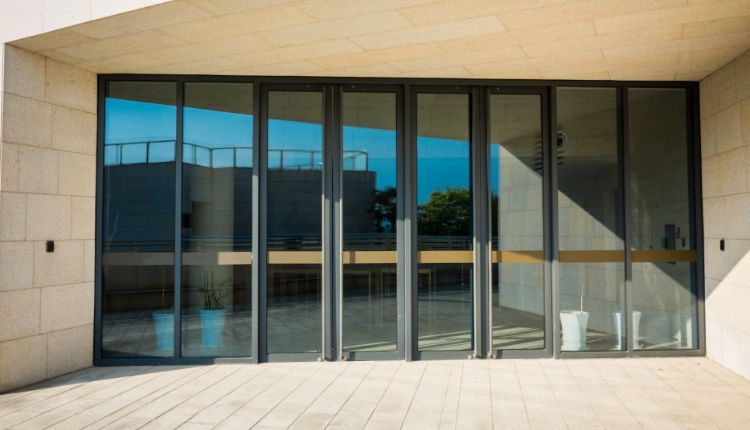Modern commercial and residential buildings have exponential demands for smooth design and superior functionality. Gliding doors align innovation and design to deliver the functional requirements of contemporary spaces.
These doors are a subtle and space-efficient solution for hospitals, hotels, malls, residential apartments, and skyscraper offices. In this guide, let’s explore the significance of gliding doors and how they add functional value to any space.
What are Gliding Doors?
Gliding doors are horizontal-sliding entrance systems that are space-friendly, noise-free, and easy to operate. They differ from conventional swing doors in that they glide in a straight line. These manual or motorized solutions are best for large rooms, narrow corridors, and even small spaces.
They are suited to areas where efficiency, noise-free operation, and smooth motion are of prime importance. Modern gliding door systems are designed with magnetic control panels or sliding automation without screeching tracks and hinges. Accordingly, they are most important in hospitals, hotels, offices, and transport terminals.
The Architectural Design of Gliding Doors
Gliding doors are not just practical; they’re also used as an aesthetic statement in modern buildings. Where first impressions count, in luxury hotels and luxury offices, these doors make a simple and understated statement that suits both modern and traditional interiors.
Here are some key features of these doors:
- Frameless glass panels admit more natural light and depict no visual separation between rooms. With noiseless, quiet operation, the building is more comfortable and serene.
- Gliding doors are best for both private and public use as they are practical and stylish. Universal, obstruction-free openings in design make them practical for the use of assistive devices without sacrificing aesthetics.
- Luxury models incorporate magnetic suspension technology instead of traditional rollers, with frictionless, quiet sliding and reduced maintenance.
- These technologies not only bring improved accessibility to buildings but also a sleeker, more modern appearance.
Common Gliding Door Specifications
Most commonly used in office buildings, medical buildings, hotels, transportation terminals, and residential buildings, here are some standard specifications:
- Height Options: 2700 mm to
- Width Options: Single door 2400 mm; double doors 4800 mm
- Types of operations: Fully automatic or manual systems
Design Options & Features
- Wall-mount or recessed, simple installations
- Radiation-shielded or fire-resistant designs
- Various design and accessory options that can fit interiors
- Best used for healthcare facility overhead patient lift systems
The Advantages of Gliding Doors in Contemporary Architecture
Gliding doors are high-performance accessories that are designed to bring about beauty and functionality in trending spaces. There are various ways in which they can make smart buildings:
1. Space Optimization
These doors move along a wall, making them ideal for confined spaces. This allows for the utilization of as much floor space as there is in rooms, corridors, or doorways.
2. Improved Accessibility
Whether they are automatic or manual, gliding doors are easier to open for self, mobility-impaired individuals, and wheelchair users. They also provide accessibility, compliance, and independence.
3. Greater Acoustic Insulation
There are also newly designed gliding door systems that perform effectively in noise suppression. They have a secure seal and impactless open system, which can be applied extensively to boardrooms, quiet rooms, and hospitals where there is a need for noise suppression.
4. Touchless Automation for Hygiene
Even in public areas, restaurants, and hospitals, touchless entry is standard. These doors reduce contact with surfaces, which further helps in controlling infection and following hygiene and sanitation practices.
5. Integration with Smart Building Systems
It is easy to integrate gliding doors with existing technological systems like smart automation hubs, security systems, or access control panels. They provide customized entry authorization and time-based usage with real-time monitoring; everything on one dashboard.
6. Low Maintenance and High Durability
These doors employ high-tech material and a non-mechanical track (or suspended rail or magnetic technology). Thus, they don’t wear out soon, are durable, and minimize maintenance.
Final Words
This is the era of architectural revolution. Gliding doors offer a discreet yet powerful catalyst for change that redefines the way we engage with modern spaces.
These doors are all about sophistication, design, aesthetics, form, and function, providing a clean look, silent operation, and worldwide availability.
Such attributes make sliding doors an essential element of buildings today. Install such designs today and enjoy a solution that is as intelligent as it is stylish.






